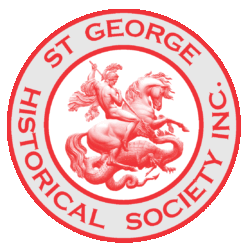The old hostelries of Kogarah, like most of the inns of the early days were distinguished for their free and easy sportive spirit and hospitality. the hotel was always one of the earliest business institutions where, before more appropriate and convenient meeting-places were to be found, people went to discuss matters of moment. It is …
Transport Difficulties
In these days of concrete and bituminous-surfaced roads a journey from Kogarah to Sydney is one devoid of difficulty and may be accomplished in quick time. Before the constitution of the Main Roads Board in 1925, or up to the time that the Board reconstructed Cook’s River Road, the condition of that road was atrocious …
An Oil Company with a Soul
One of the most consistent enemies of Historical Societies and those interested in the preservation of relics of our earlier days are the Oil Companies – those people who seem to have unlimited capital and a passion for building Service Stations wherever some fine reminder of the district’s beginnings has managed to withstand the passing …
The Gannons of Tempe: Frederick Gannon Senior
By Anne Carolan The name Gannon is familiar even to newer residents of the St Peters/Tempe area because it features as the name of a street. Long-time residents still call the now dilapidated old home in Union Street, ‘Gannon’s Place’. Those interested in local history will know that the road to Hurstvile was once called …
Continue reading “The Gannons of Tempe: Frederick Gannon Senior”
Reminiscences with a Touch of St. George
by Bettye Ross The following was told to me by two very charming ladies named Jess Chadwick and her sister Georgie some years ago. I’m sure you’ll enjoy the manner it was told to me, mainly by Jess, Georgie who had early Alzheimers didn’t really have much to say. Unfortunately Jess moved before we could …

